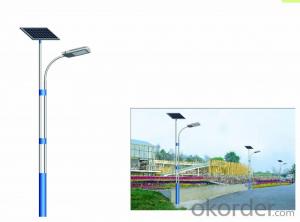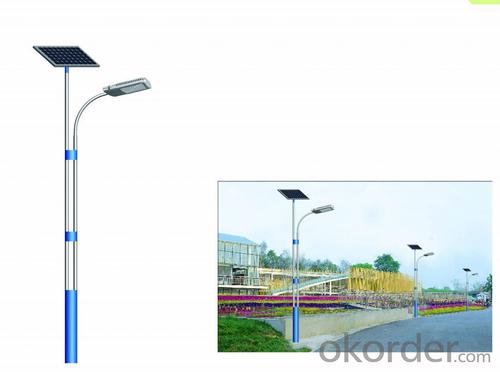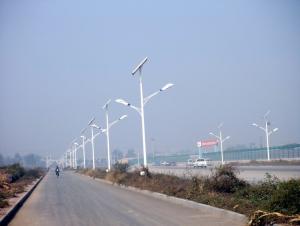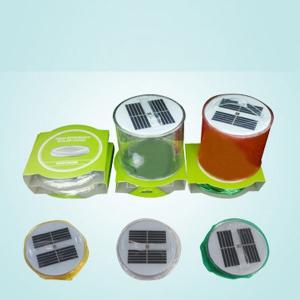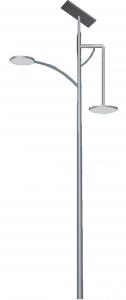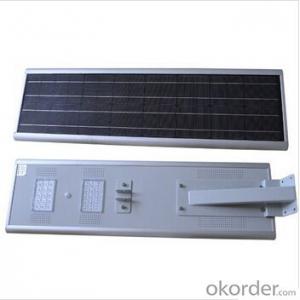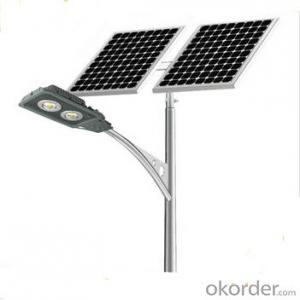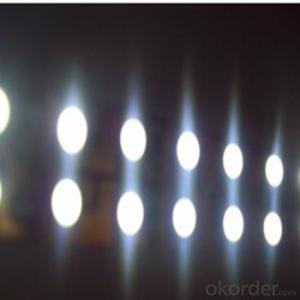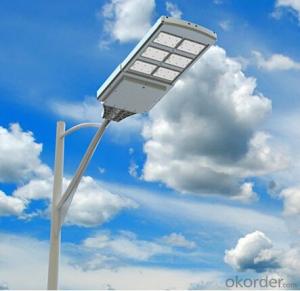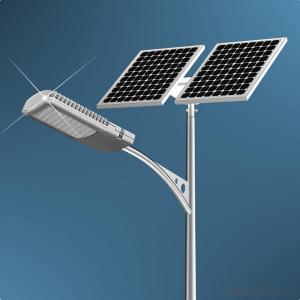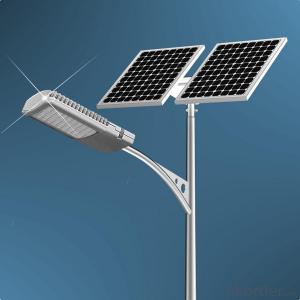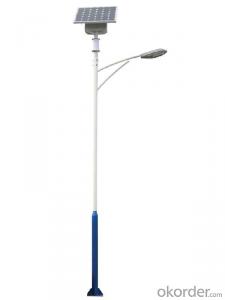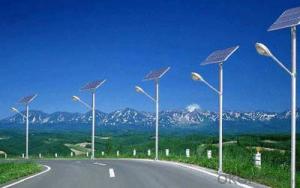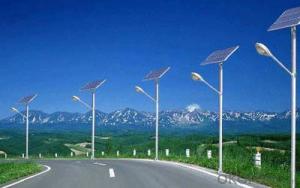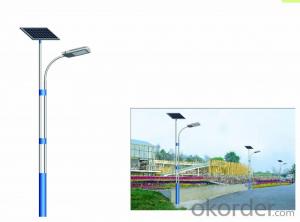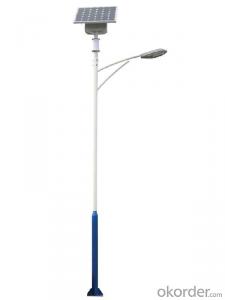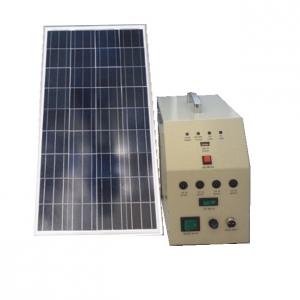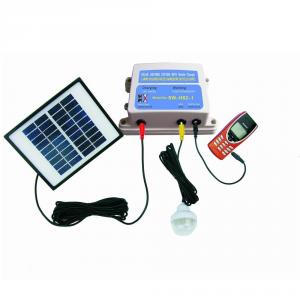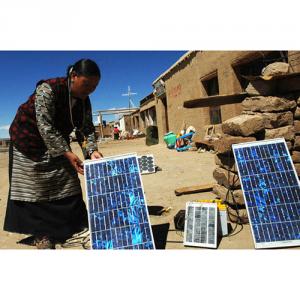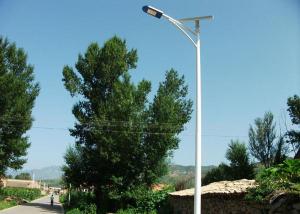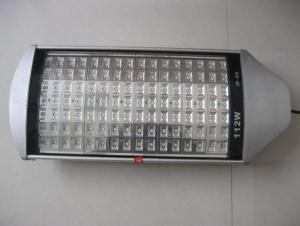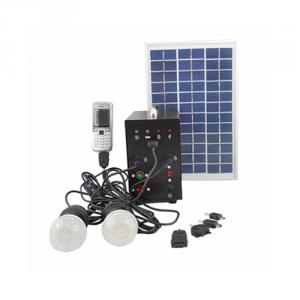Solar Light Fence Caps - Off Grid New Energy Solar Product 025nm
- Loading Port:
- Shanghai
- Payment Terms:
- TT OR LC
- Min Order Qty:
- 1 watt
- Supply Capability:
- 5000 watt/month
OKorder Service Pledge
OKorder Financial Service
You Might Also Like
1, Product desciption
Inverter circuits designed to produce a variable output voltage range are often used within motor speed controllers.
The DC power for the inverter section can be derived from a normal AC wall outlet or some other source. Control and feedback circuitry is used to adjust the final output of the inverter section which will ultimately determine the speed of the motor operating under its mechanical load.
Motor speed control needs are numerous and include things like: industrial motor driven equipment, electric vehicles, rail transport systems, and power tools. (See related: variable-frequency drive ) Switching states are developed for positive, negative and zero voltages as per the patterns given in the switching Table.
The generated gate pulses are given to each switch in accordance with the developed pattern and thus the output is obtained.
Solar power is energy from the sun. "Solar" is the Latin word for "sun" and
And Powerful source of energy. Without it, there will be no life.
Solar energy is considered as a serious source of energy for many years
of the vast amounts of energy that is made freely available, if harnessed by modern technology.
A magnifying glass can be used to heat up a small amount of water.
The short piece of copper tube is sealed at one end and filled with water.
And magnifying glass is then used to warm up the pipe.
Using more than one magnifying glass will increase the temperature more rapidly.
2, Features of the product
Inverters convert low frequency main AC power to higher frequency for use in induction heating.
To do this, AC power is first rectified to provide DC power. The inverter then changes the DC power to high frequency AC power. Due to the reduction in the number of DC Sources employed, the structure becomes more reliable and the output voltage has higher resolution due to an increase in the number of steps so that the reference sinusoidal voltage can be better achieved.
This configuration has recently become very popular in AC power supply and adjustable speed drive applications. This new inverter can avoid extra clamping diodes or voltage balancing capacitors. There are three kinds of level shifted modulation techniques, namely: 1,High and stable conversion efficienly based on over 4 years professional experience
2 ,High reliability with guaranteed +/-10% output power tolerance
3,Proven materials,tempered front glass,and a sturdy anodized aluminum frame allow modules to operate reliably in multiple mountily configurations
4,Combination of high efficicncy and attractive appearance
The first thing to figure out is the length of road in need of street lights.
This can be a small entrance road only a couple hundred of feet long to miles of streets through an area. Does the area currently have any type of lighting available.
What is the reason for needing street lights in this area
Is the electrical grid already nearby or would you need to call in the power company to bring in electrical lines.
If the electric needs to be brought to the area, how much is this going to cost? Depending on how far the grid electric is from the location of the needed lighting, this can be quite expensive.
How much lighting is needed on the street? Do the lights need to be dark sky compliant.
Do the street lights need to run from dusk to dawn or for only a specified number of hours at night.
Are the street lights able to dim in the middle of the night and still provide enough lighting.
These questions need to be answered before you can decide on how many lights you will need to complete the project.
Grid-tie inverters that are available on the market today use a number of different technologies. The inverters may use the newer high-frequency transformers, conventional low-frequency transformers, or no transformer. Instead of converting direct current directly to 120 or 240 volts AC, high-frequency transformers employ a computerized multi-step process that involves converting the power to high-frequency AC and then back to DC and then to the final AC output voltage.
Historically, there have been concerns about having transformerless electrical systems feed into the public utility grid. The concerns stem from the fact that there is a lack of galvanic isolation between the DC and AC circuits, which could allow the passage of dangerous DC faults to be transmitted to the AC side. Since 2005, the NFPA's NEC allows transformerless (or non-galvanically) inverters. The VDE 0126-1-1 and IEC 6210 also have been amended to allow and define the safety mechanisms needed for such systems. Primarily, residual or ground current detection is used to detect possible fault conditions. Also isolation tests are performed to insure DC to AC separation.
Many solar inverters are designed to be connected to a utility grid, and will not operate when they do not detect the presence of the grid. They contain special circuitry to precisely match the voltage and frequency of the grid.
A charge controller may be used to power DC equipment with solar panels. The charge controller provides a regulated DC output and stores excess energy in a battery as well as monitoring the battery voltage to prevent under/over charging. More expensive units will also perform maximum power point tracking. An inverter can be connected to the output of a charge controller to drive AC loads.
3, Detailed Specification
Data Sheet of High Quality Solar Controller Tracer-1210RN
ModelTracer-1210RN
Rated system voltage12/24V auto work
Rated battery current10A
Rated load current10A
Max.battery voltage32V
Max.PV open circuit voltage100VDC
Max.PV input power12V 130W;24V 260W
Self-consumption<10ma(24v)< span="">
Charge Circuit Voltage<=0.26v< span="">
Discharge Circuit Voltage Drop<=0.15v< span="">
CommunicationTTL232/8 pin RJ45
Temp/compensation-30mV/℃/12V(25℃)
Working temperature-35℃~+55℃
Storage temperature range-35℃~+55℃
4, Product Image
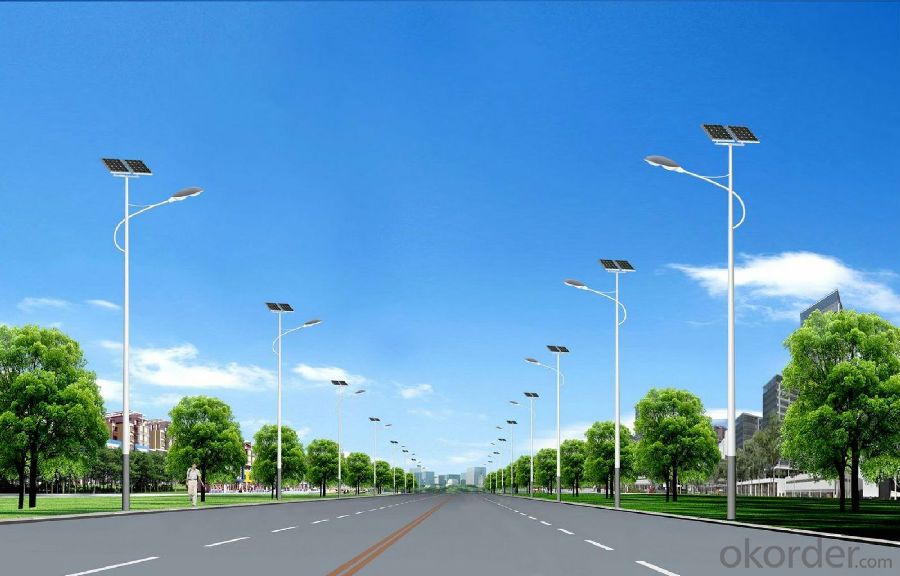
- Q: Are there solar lights with GPS tracking capabilities?
- Solar lights with GPS tracking capabilities can be found in the market. These lights are specifically designed to utilize solar energy during the day in order to power their built-in GPS tracking system. With this feature, users can track the lights' real-time location, making them suitable for a range of applications. For example, in outdoor security lighting, solar lights with GPS tracking can aid in monitoring and tracing potential intruders. Furthermore, in remote areas or emergency situations, these lights can provide illumination while also being easily locatable. In summary, solar lights with GPS tracking offer improved functionality and convenience in different situations.
- Q: Do solar lights have a built-in overcharge or discharge protection?
- Most solar lights are equipped with a built-in system that protects against overcharging and discharging. This system is designed to prevent damage caused by excessive charging or draining of the battery. Overcharge protection ensures the battery does not become overcharged, which can result in a shorter battery life or damage. Discharge protection prevents the battery from being completely depleted, which can also reduce its lifespan. These protective measures are often incorporated into the control circuitry of the solar lights, ensuring safe and efficient operation while maximizing the battery's longevity. However, it is advisable to check the product specifications or the manufacturer's information to confirm the availability of these protective features in a specific solar light model.
- Q: Are there solar lights for boating or marine applications?
- Yes, there are solar lights specifically designed for boating or marine applications. These solar lights are designed to withstand the harsh marine environment and are often waterproof, corrosion-resistant, and durable. They are commonly used for navigation, safety, and decorative purposes on boats and other marine vessels.
- Q: What is the average price of solar lights?
- The average price of solar lights can vary depending on factors such as the brand, quality, features, and design. Generally, you can find solar lights ranging from around $20 to $100 or more.
- Q: Can solar lights be used for deck lighting?
- Certainly, deck lighting can certainly make use of solar lights. In fact, they are quite popular and practical for illuminating decks. Solar lights are specifically designed to gather energy from the sun during the day and store it in batteries that are built into the lights. This stored energy is then utilized to power the lights at night, eliminating the need for any electrical wiring or outlets. Solar deck lights are simple to install and are available in a variety of styles and designs to suit different deck aesthetics. They provide a gentle and ambient glow, enhancing the overall atmosphere of your deck and making it a more enjoyable space to relax or entertain in the evenings. Moreover, opting for solar lights for deck lighting is an environmentally conscious choice, as they are powered by renewable energy and do not contribute to greenhouse gas emissions.
- Q: Can solar lights be used in areas with high humidity?
- Yes, solar lights can be used in areas with high humidity. Solar lights are designed to be weatherproof, including being resistant to moisture and humidity. However, it is important to regularly clean and maintain the solar panels to ensure optimal performance in these conditions.
- Q: How do solar lights handle electromagnetic interference from nearby structures?
- Solar lights have the ability to handle electromagnetic interference (EMI) from nearby structures to a certain extent, but the level of interference they can tolerate may vary depending on their specific design and quality. Various sources, including power lines, electrical equipment, and wireless communication devices, can generate EMI. These electromagnetic waves have the potential to affect the functionality and performance of solar lights. To minimize the impact of EMI, solar lights are typically equipped with shielding mechanisms and filters. These components work to reduce the electromagnetic radiation that could interfere with the light's internal circuitry. In addition, solar lights are often designed with strong circuitry that can withstand a certain level of interference. This involves using high-quality components and proper grounding techniques to minimize the effects of EMI. However, it is important to note that solar lights may not be completely immune to all types of electromagnetic interference. If nearby structures produce particularly strong or specific frequencies of EMI, the solar lights may experience some disruption or interference. To ensure optimal performance and minimize the impact of EMI, it is recommended to install solar lights in locations that are not close to strong sources of electromagnetic radiation. Regular maintenance and inspection of the lights can also help identify any potential issues caused by nearby structures, allowing appropriate remedies to be implemented.
- Q: Are solar lights safe for children?
- Generally speaking, solar lights are considered safe for children. Designed as energy-efficient and environmentally friendly alternatives to traditional lighting options, solar lights typically consist of a solar panel, rechargeable battery, and LED light source. They operate without the need for electrical wiring, relying solely on the power of the sun, making them safe to use around children. Primarily used for outdoor purposes, such as lighting pathways, gardens, or play areas, solar lights emit a gentle and ambient light that poses no harm to children's eyes. Furthermore, these lights do not generate heat, which reduces the risk of burns or fire hazards. Nevertheless, it is important to note that precautions should be taken when using solar lights around children, just as with any other device or product. For example, young children should be supervised to prevent accidents or misuse of the lights. It is also advisable to securely install the solar lights, ensuring they cannot be pulled or knocked over by children. In summary, solar lights offer a safe and sustainable lighting option for children, allowing them to enjoy outdoor spaces while minimizing the risks typically associated with traditional electrical lighting.
- Q: Can solar lights be used on boats and RVs?
- Yes, solar lights can be used on boats and RVs. They are a great alternative lighting option as they do not require electricity from the boat or RV's power source. Solar lights can be easily installed and provide energy-efficient lighting both indoors and outdoors. Additionally, they are portable and can be used to illuminate different areas on the boat or RV, making them a practical and environmentally friendly choice for lighting in such settings.
- Q: Do solar lights emit any noise or vibrations?
- Solar lights do not produce any noise or vibrations, I'm afraid. These lights are fueled by sunlight and lack any components or mechanisms that could generate sound or vibrations. Their purpose is to operate silently, while being eco-friendly, and offer illumination without causing any audible or physical disruptions.
Send your message to us
Solar Light Fence Caps - Off Grid New Energy Solar Product 025nm
- Loading Port:
- Shanghai
- Payment Terms:
- TT OR LC
- Min Order Qty:
- 1 watt
- Supply Capability:
- 5000 watt/month
OKorder Service Pledge
OKorder Financial Service
Similar products
Hot products
Hot Searches
Related keywords
